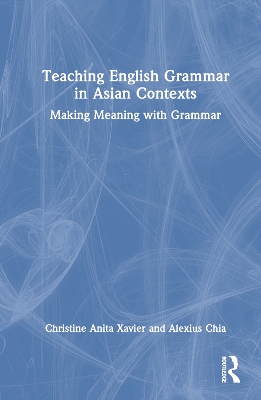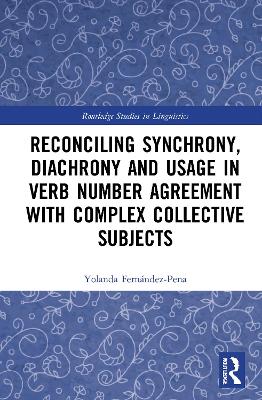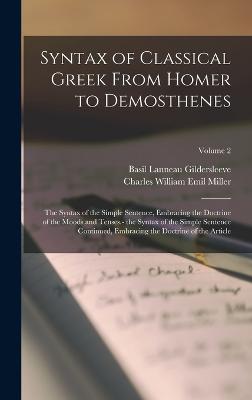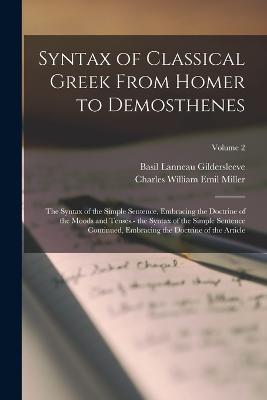Register-Functional Approach to Grammatical Complexity
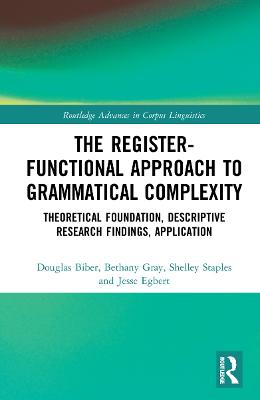 portes grátis
portes grátis
Register-Functional Approach to Grammatical Complexity
Theoretical Foundation, Descriptive Research Findings, Application
Egbert, Jesse; Gray, Bethany; Biber, Douglas; Staples, Shelley
Taylor & Francis Ltd
12/2021
506
Dura
Inglês
9780367520243
15 a 20 dias
825
List of Tables
Permissions
PART I: The Register-Functional Perspective on Complexity
Chapter 1: Introduction
Chapter 2: Theoretical and Descriptive Linguistic Foundation of the Register-Functional Approach to Grammatical Complexity
Chapter 3: Overview of the Analytical Methods Used in Register-Functional Complexity Research
PART II: Descriptive Linguistic Studies of Synchronic Patterns
Chapter 4: On the complexity of discourse complexity: A multidimensional analysis
Chapter 5: Challenging stereotypes about academic writing: Complexity, elaboration, explicitness
Chapter 6: On the complexity of academic writing: Disciplinary variation and structural complexity
Chapter 7: Stance and grammatical complexity: An unlikely partnership discovered through corpus analysis
PART III: Descriptive Linguistic Studies of Diachronic Patterns
Chapter 8: Grammatical change in the noun phrase: The influence of written language use
Chapter 9: Being specific about historical change: The influence of sub-register
Chapter 10: Nominalizing the verb phrase in academic science writing
Chapter 11: The functional extension of phrasal grammatical features in academic writing
Chapter 12: The loss of explicitness in academic research writing
PART IV: Applied Research
Chapter 13: Rationale and hypotheses for the study of writing development from the RF perspective
Chapter 14: Should we use characteristics of conversation to measure grammatical complexity in L2 writing development?
Chapter 15: Predicting patterns of grammatical complexity across language exam task types and proficiency levels.
Chapter 16: Academic writing development at the university level: Phrasal and clausal complexity across level of study, discipline, and genre
Chapter 17: Understanding first-year L2 writing: A lexico-grammatical analysis across L1s, genres, and language ratings
Chapter 18: Exploring the longitudinal development of grammatical complexity in the disciplinary writing of L2-English university students
Chapter 19: The longitudinal development of grammatical complexity at the phrasal and clausal levels in spoken and written responses to the TOEFL iBT test
Chapter 20: Investigating grammatical complexity in L2 English writing research: Linguistic description versus predictive measurement
PART V: Conclusion
Chapter 21: Reflecting on the Register-Functional Approach to Grammatical Complexity: What do we know and where do we go from here?
References
Index
List of Tables
Permissions
PART I: The Register-Functional Perspective on Complexity
Chapter 1: Introduction
Chapter 2: Theoretical and Descriptive Linguistic Foundation of the Register-Functional Approach to Grammatical Complexity
Chapter 3: Overview of the Analytical Methods Used in Register-Functional Complexity Research
PART II: Descriptive Linguistic Studies of Synchronic Patterns
Chapter 4: On the complexity of discourse complexity: A multidimensional analysis
Chapter 5: Challenging stereotypes about academic writing: Complexity, elaboration, explicitness
Chapter 6: On the complexity of academic writing: Disciplinary variation and structural complexity
Chapter 7: Stance and grammatical complexity: An unlikely partnership discovered through corpus analysis
PART III: Descriptive Linguistic Studies of Diachronic Patterns
Chapter 8: Grammatical change in the noun phrase: The influence of written language use
Chapter 9: Being specific about historical change: The influence of sub-register
Chapter 10: Nominalizing the verb phrase in academic science writing
Chapter 11: The functional extension of phrasal grammatical features in academic writing
Chapter 12: The loss of explicitness in academic research writing
PART IV: Applied Research
Chapter 13: Rationale and hypotheses for the study of writing development from the RF perspective
Chapter 14: Should we use characteristics of conversation to measure grammatical complexity in L2 writing development?
Chapter 15: Predicting patterns of grammatical complexity across language exam task types and proficiency levels.
Chapter 16: Academic writing development at the university level: Phrasal and clausal complexity across level of study, discipline, and genre
Chapter 17: Understanding first-year L2 writing: A lexico-grammatical analysis across L1s, genres, and language ratings
Chapter 18: Exploring the longitudinal development of grammatical complexity in the disciplinary writing of L2-English university students
Chapter 19: The longitudinal development of grammatical complexity at the phrasal and clausal levels in spoken and written responses to the TOEFL iBT test
Chapter 20: Investigating grammatical complexity in L2 English writing research: Linguistic description versus predictive measurement
PART V: Conclusion
Chapter 21: Reflecting on the Register-Functional Approach to Grammatical Complexity: What do we know and where do we go from here?
References
Index


